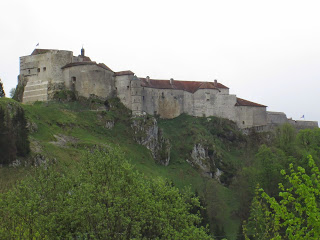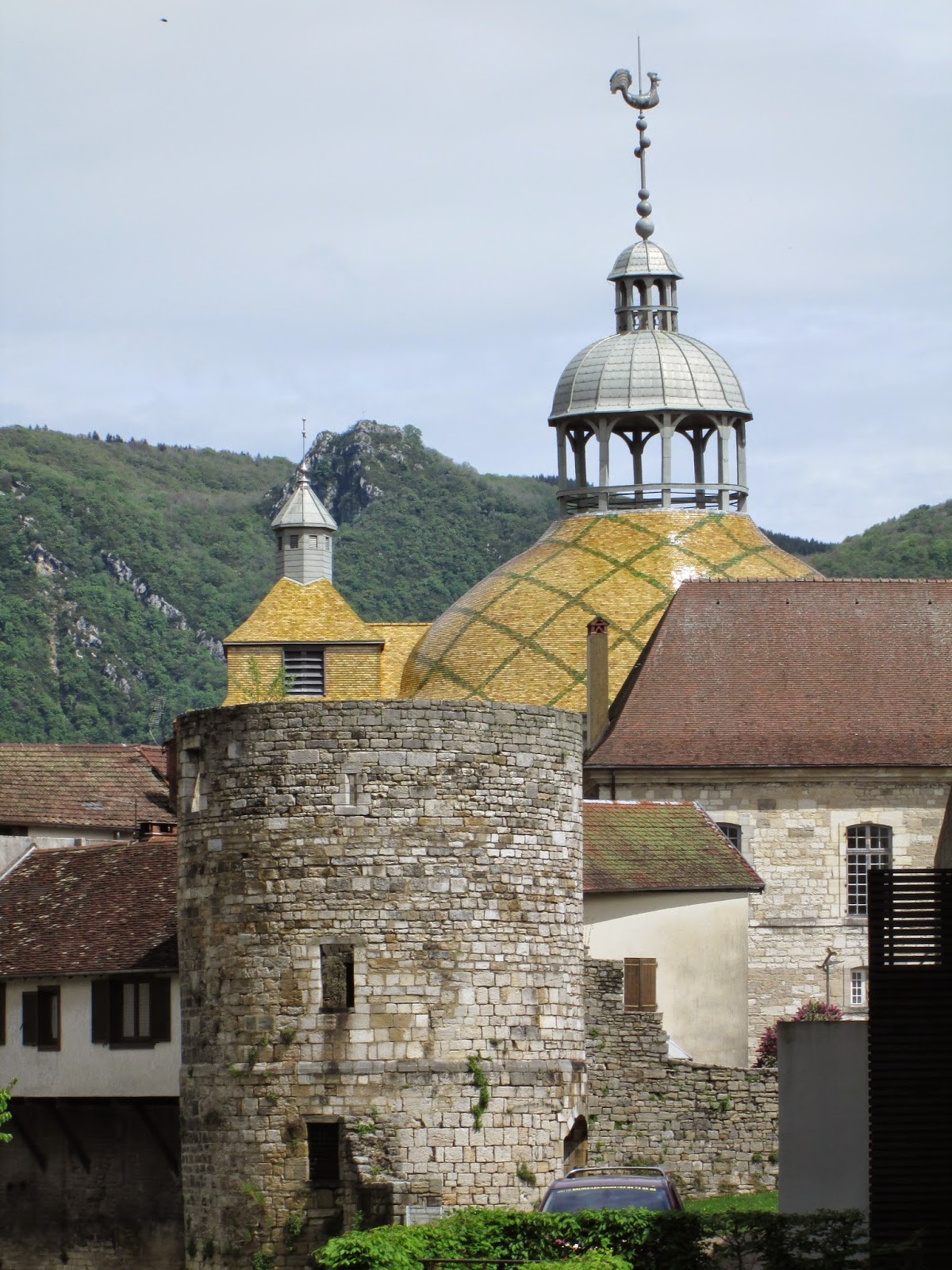On our last full day in France, we drove from our gite in Saligney to the town of Segny, near Geneva, where we were spending the final night. On the way, we made a few stops, the first one being Chateau de Joux. The construction of Chateau de Joux began about 1,000 years ago, and it was rebuilt, added to, and remodeled numerous times over almost 1,000 years. The chateau, together with Fort Mahler, are located high above a mountain pass that was an important commercial route and later a strategic military route from northern Italy through Switzerland into what later became France. We stopped along the road to have a picnic and take some photos from down below, then drove up towards the chateau and walked up from the lower parking lot.
 |
| Chateau de Joux From Below |
 |
| At the Chateau |
 |
| Chateau de Joux and Fort Mahler on Opposite Sides of the Pass |
After leaving Chateau de Joux we continued our drive through numerous mountain villages. We made one stop, in Les Rousses, where we parked and walked through the town. There was a terrific-looking cheese shop in the center, which we passed up because we had another cheese shop in mind for later on, and there was also a not-so-appetizing looking restaurant whose menu included Wings de Poulet (Chicken Wings).
Finally, we drove from Les Rousses up into the Jura Mountains and then down into the valley where Geneva and Lac Leman are situated. We checked in at La Bonne Auberge in Segny, where we had stayed 5 years previously. Segny is a small suburban town just off the major road heading towards Geneva, but there are several things to recommend it as a place to stay. La Bonne Auberge is a charming small hotel that used to be a large farmhouse, and it has been beautifully remodeled. And just across the road is a fantastic bakery, a cheese vendor, Fromagerie Michelin, that may be the best cheese shop I’ve ever been in, and a lovely restaurant, Chez Arno, where we had lunch 5 years ago. We patronized all three establishments on this visit: at Fromagerie Michelin we bought a lot of cheese, which now resides in our house; we had dinner that night at Chez Arno, which was outstanding (including sweetbreads and stuffed fillet of rabbit, and one more Seyssel wine); and we bought croissants and bread the next morning at the boulangerie to bring home.
Since we had a little time before dinner, we drove to the nearby commercial center of Ferney-Voltaire, which is right by the Swiss border. We parked and took a stroll through the town, and had a glass of wine at an outdoor café. We also spied a sleeping cat at the beginning of our walk, which was still sleeping, albeit on a different step than she had been on, when we walked by again 45 minutes later. Just then the cat’s owner drove up, and the cat came to life. Talking to her (the owner, not the cat), we found out why the cat probably was so tired: she often accompanies her owner on 3-hour walks in the Jura Mountains!
Before leaving Ferney-Voltaire, we also saw this fascinating sight, which made us realize that one never needs to go hungry in Ferney-Voltaire, no matter what the time of day or night. There, in a tiny side street, was a pizza machine that supposedly operates 24 hours a day, seven days a week. Just put in your Euros or credit card, and 4 minutes later you have a finished pizza. We skipped it, though, since we had dinner reservations at Chez Arno.
Sunday morning we had breakfast at La Bonne Auberge, walked across to the boulangerie to pick up some things to bring home, then drove to Geneva Airport to drop off our car and fly home. The less said about the return voyage the better. Now we’re home, and the cheese and wine (and everything else) made it back safely.















































